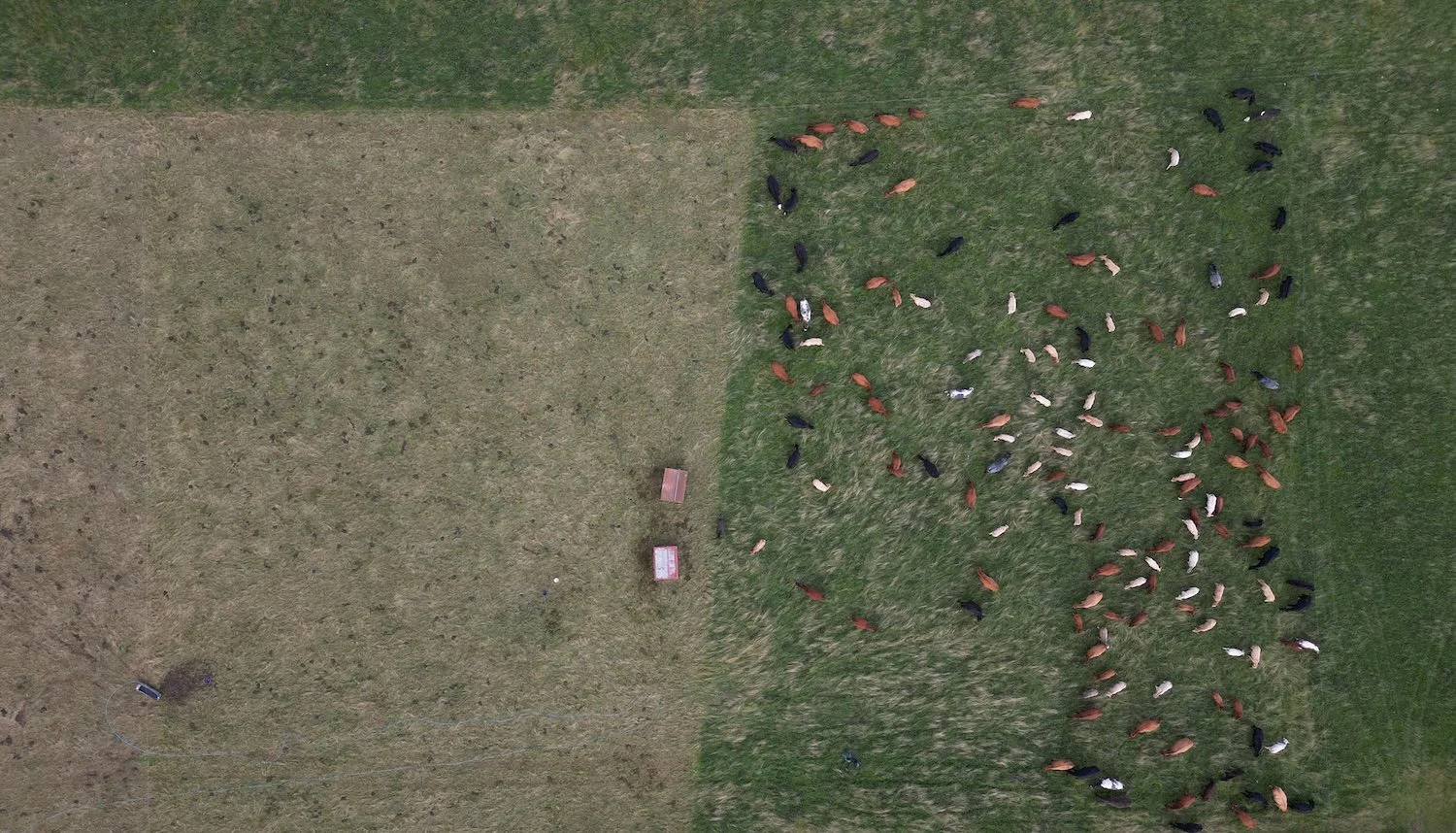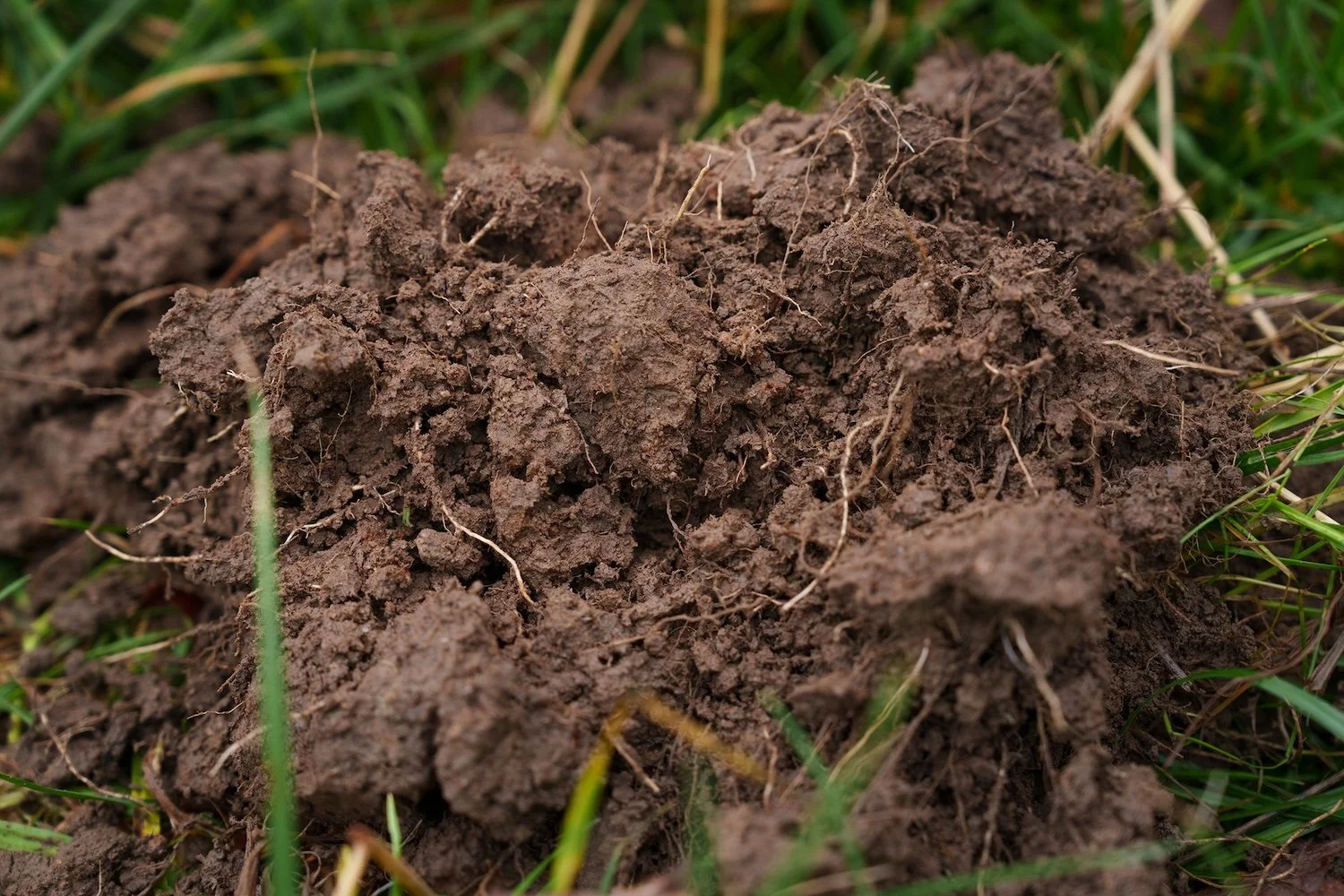Allen Williams: Building resilience to drought with healthy soil
With hot, dry conditions hitting much of the UK this spring and summer, we invited Dr Allen Williams to join Grounded: The regenerative farming podcast to discuss how healthy soil can build resilience to drought.
Allen, who leads our mentoring team alongside Gabe Brown, is one of the most well-known figures in the world of regenerative farming.
He says through thoughtful use of adaptive grazing and observing the principles of soil health, farms can not only survive periods of drought but thrive.
Allen Williams at Regenerate Outcomes Soil Health Workshop this summer.
“We've seen this over and over,” says Allen.
“Direct fence line comparisons between a neighbour that has been managed adaptively and the next door neighbor that's been managing conventionally. It's night and day.
“You wouldn't even believe drought was occurring on the neighbour that's been managing regeneratively and grazing adaptively.
“But you certainly see it on the neighbour that's been managing conventionally.”
Preparing for drought with adaptive grazing
Allen says using adaptive multi-paddock grazing (AMP or mob grazing), where livestock are moved frequently between paddocks, is the first step to building drought resilience.
Under an adaptive grazing system, paddocks are given longer periods of rest, allowing plants to mature, promoting greater diversity, increasing rooting depth and driving biological activity to build soil aggregates and retain moisture.
“You've got to pre-plan and assume dry and droughty conditions are coming,” says Allen.
“If you're caught unprepared in the middle of a drought you have far fewer options and choices.”
A key consideration is to avoid over-grazing and leave residual growth after moving animals from one paddock to another.
Adaptive multi-paddock grazing in use on a farm in Northumberland.
“No matter how much rain you're getting, no matter how much moisture you have in your soil you want to make sure you're leaving plenty of residual behind you,” says Allen.
“That is really critically important because the more residual I leave, the more root biomass and root depth I have, the more aggregation I'm going to have in the soil, the more nutrient cycling I'm going to have.
“I'm also protecting soil moisture and soil temperature by leaving plenty of residue on top of the soil. This means I am stockpiling forage ahead of me. That way, if it does begin to turn dry, then I can go much, much deeper into that drought, having plenty to graze.”
How does leaving residual plant growth in place reduce the impact of drought?
Protecting the soil
Over-grazing removes plant cover, exposing the soil to more sunlight and higher temperatures.
“It takes that shade protection off the soil, because we're not leaving enough leaf material on our plants,” says Allen.
“That warms the soil rapidly. So we begin to get evaporation and we lose over 85 percent of our soil moisture in the top three to four inches.
“As soil temperature heats up, not only does it create evaporation, but it also kills much of our biology through pasteurization. So now we have far less biology working for us to cycle nutrients.
“If we retain cover we're going to keep the soil at a much more appropriate temperature for the microbiology and we’re protecting our moisture.”
Preserving rooting depth
Over-grazing also risks having an effect on rooting depth as plants die off.
“The living portion of the root is going to be much closer to the soil surface and that's not where I need my roots in a drought,” says Allen.
Preserving rooting depth is key to building soil aggregation
“I need my roots reaching down much deeper into that soil profile where I still do have moisture.”
Living roots also supply the exudates which soil microbes consume in return for cycling nutrients back to the plants. The microbes produce the biotic glues which stick soil particles together and produce aggregates.
Keeping a greater amount of residual cover helps continue to drive these processes and promote regrowth.
Absorbing and retaining moisture
Retaining biomass in order to continue soil aggregation is critical when it comes to capturing moisture that is available during drought.
“When it is dry we desperately need soil that can capture and retain water,” says Allen.
“Without aggregation we risk not absorbing water when we need it the most.”
Maintaining mycorrhizal and microbial moisture exchange
The network of hyphae - microscopic tube-like structures - which connect mycorrhizal fungi actively transport water between the roots of plants.
At the same time, a healthy microbial population will generate water vapour through respiration which can be taken up by plants.
Keeping living roots in the ground and armouring the soil will help ensure both of these functions continue.
Soil health helps, whatever the weather
Allen says the beauty of all of these benefits is that they also stand farms in good stead during periods of heavy rain.
“The solution is the same no matter whether you are too dry or too wet,” he says.
“If I'm prepared for a drought, I am also prepared for excessive wet conditions because my soil is so deeply aggregated. Just like in a drought, it can absorb and retain moisture without having negative consequences for animal and plant performance.”
Listen to more from Dr Allen Williams on the full episode of Grounded now
You can listen to the full conversation between Allen, Kyle Richardville and Stuart Johnson, from our mentoring team, by clicking on the button below.
Alternatively just search for Grounded: The regenerative farming podcast wherever you get your podcasts.
Regenerate Outcomes works with
farmers to grow profits
We provide one-to-one mentoring to help you cut costs and improve crop and livestock performance.
At the same time, we baseline and measure soil carbon at no upfront cost to generate carbon credits which you can retain or sell for additional income.
Find out more by downloading our Programme Handbook.



